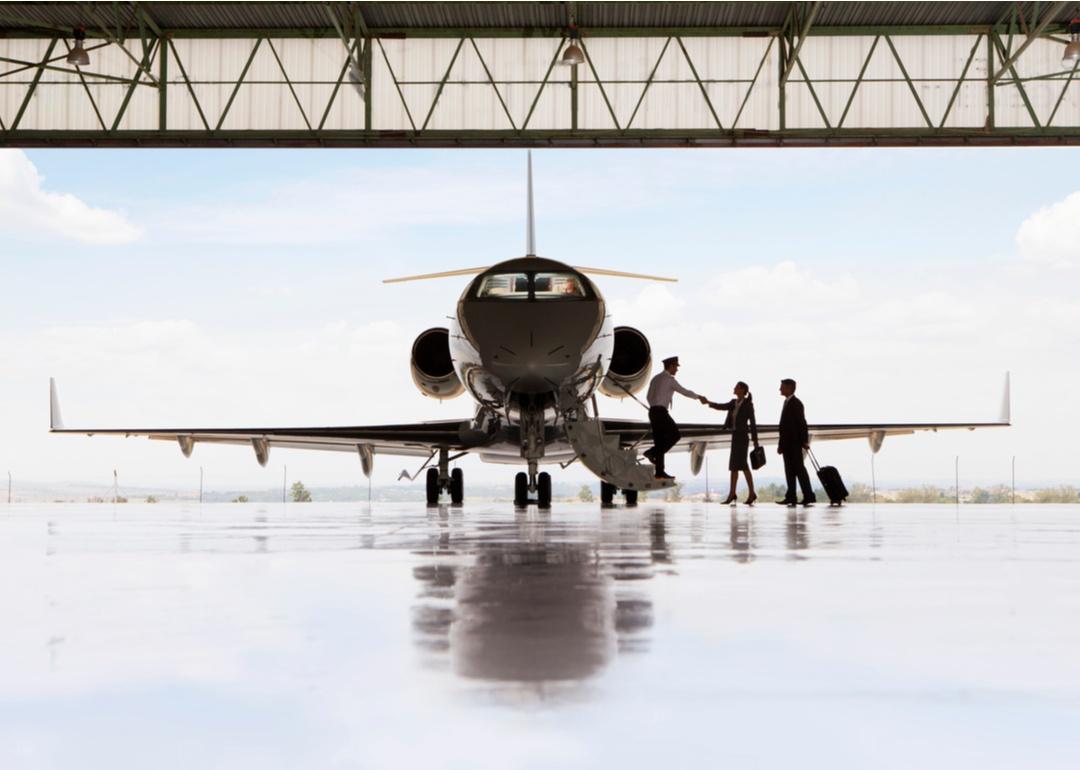
This story originally appeared on Bounce and was produced and distributed in partnership with Stacker Studio.
Employment outlook for airline industry occupations
The last few years have been challenging for those employed in commercial aviation in the U.S. as a wave of furloughs and layoffs in the industry slashed 90,000 jobs by the end of 2020. As the pandemic almost brought aviation to a halt, the airlines lobbied for and received a $25 billion bailout from the federal government, partially made up of loans. Nonetheless, COVID-19 was a painful blow to the industry, driving the lowest level of airline employment in decades.
There was some hope when millions of Americans started flying again during the summer and fall of 2021. During this time, more Americans were getting vaccinated and a desire to return to normalcy spurred many to plan trips again. However, travelers were also waving goodbye to pandemic-induced, nearly empty cheap flights and highly flexible booking options. Travel coming back in full swing resulted in long security lines, followed by frustrated passengers.
Since airlines and the Transportation Safety Administration had laid off many employees over the previous months, the industry faced airport staff shortages, and airlines often couldn't keep up with renewed passenger demand. When more airline employees returned to work, flight attendants faced erratic schedules and sometimes, reduced flying hours. The current pilot shortage has been exacerbated by stalled training and hiring, after a slew of airlines offered pilots early retirement to cut labor costs.
Today the aviation industry appears to be experiencing a slow recovery. As of Feb. 2022, U.S. airlines serviced 613,702 flights—up from 407,441 flights in Feb. 2021. Nearly 55 million passengers took a flight in Feb. 2022, more than double the number in Feb. 2021. Delta Airlines returned to profitability in March 2022.
Bounce collected 2030 employment projections data from the Bureau of Labor Statistics and compared it to 2021 Occupational Employment and Wage Statistics data to see how the aviation industry looks today across various occupations.
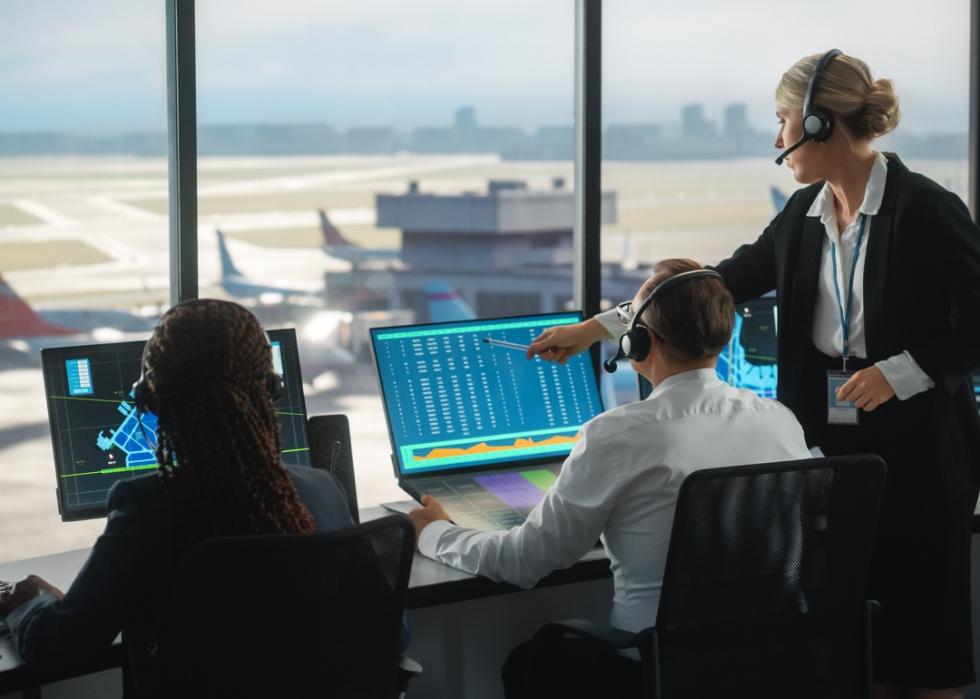
#6. Air traffic controllers
- Projected employment increase by 2030: 3.8%
- 2021 employment: 21,230 (13.3% decrease from 2020)
- Projected 2030 employment: 25,500
- 2021 annual mean wage: $127,920
Air traffic controllers work closely with pilots to ensure the safe takeoff and landing of aircraft. Most air traffic controllers work for the Federal Aviation Administration (FAA) and may work from the control tower in a semi-dark room. Air traffic controllers are in communication with the pilot during the flight and monitor where the aircraft is at all times.
In November and December 2020, 300 air traffic controller centers were impacted by COVID-19 with multiple cases of infections. This led to several flight delays and closures in which the FAA had to take measures to ensure efficient disinfecting and cleaning of the facilities.
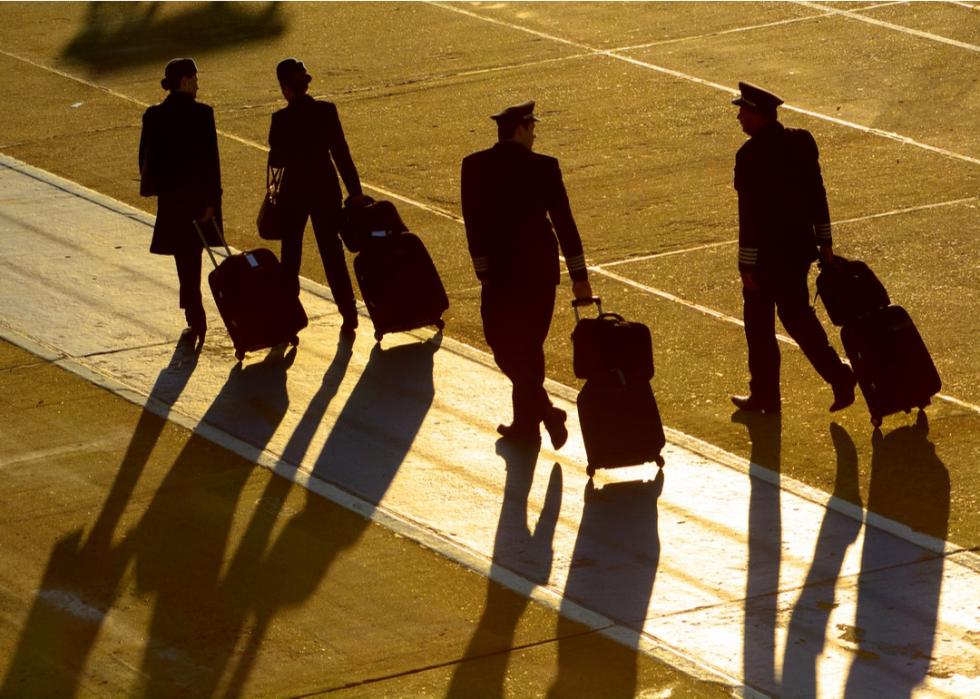
#5. Commercial pilots
- Projected employment increase by 2030: 11.4%
- 2021 employment: 42,770 (9.1% increase from 2020)
- Projected 2030 employment: 43,600
- 2021 annual mean wage: $115,080
Commercial pilots may operate charter flights, which involve shorter distances flown in smaller planes, or fly private jets. They are also known as corporate pilots and may transport executives. Agriculture pilots handle jobs related to the farming industry, including crop-dusters. The reduction of flights—including corporate and airline aviation—led to many job losses all around.
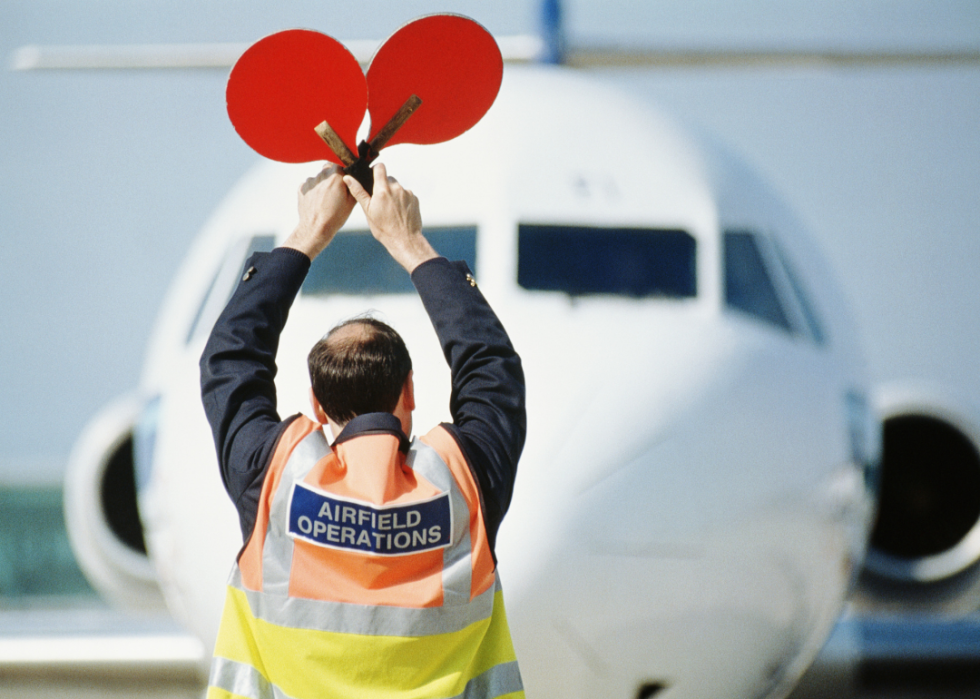
#4. Airfield operations specialists
- Projected employment increase by 2030: 12.9%
- 2021 employment: 12,610 (21.3% increase from 2020)
- Projected 2030 employment: 11,700
- 2021 annual mean wage: $54,360
The primary duties of airfield operations specialists are to ensure commercial and military aircraft land safely. An aircraft operations specialist's schedule may change depending on weather conditions or customer demand. People in this role may also maintain and monitor flight records as well as implement safety procedures.
The pandemic's disruption of aircraft schedules trickled down to scheduling for crews and other airline employees and airport workers.
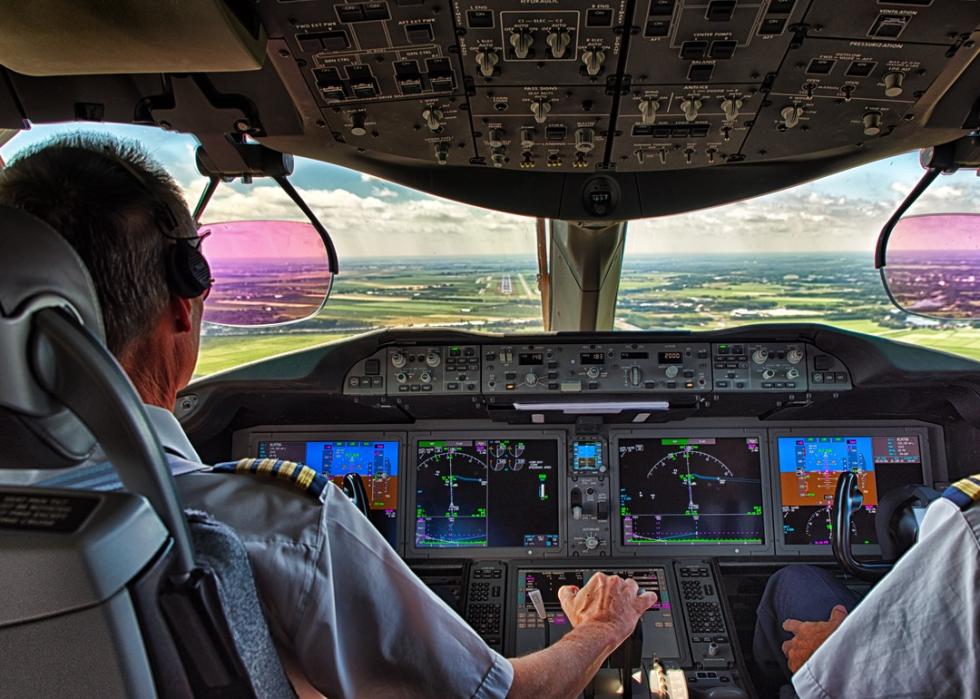
#3. Airline pilots, copilots, and flight engineers
- Projected employment increase by 2030: 13.7%
- 2021 employment: 81,310 (8.8% increase from 2020)
- Projected 2030 employment: 85,000
- 2021 annual mean wage: $198,190
In addition to flying the aircraft, airline pilots confirm flight plans before their scheduled flights and are responsible for the flight crew and passengers on board. Typical job duties include conducting pre-flight inspections, but the job can also require making quick decisions during highly stressful emergencies.
Flight engineers are mostly used to check systems on older aircrafts prior to the flight. Their responsibilities may include monitoring the aircraft's fuel levels and following the flight captain's orders. Since the COVID-19 pandemic, the U.S. has faced a major pilot shortage, resulting in a domino effect of airlines cutting flights just as people are returning to travel.
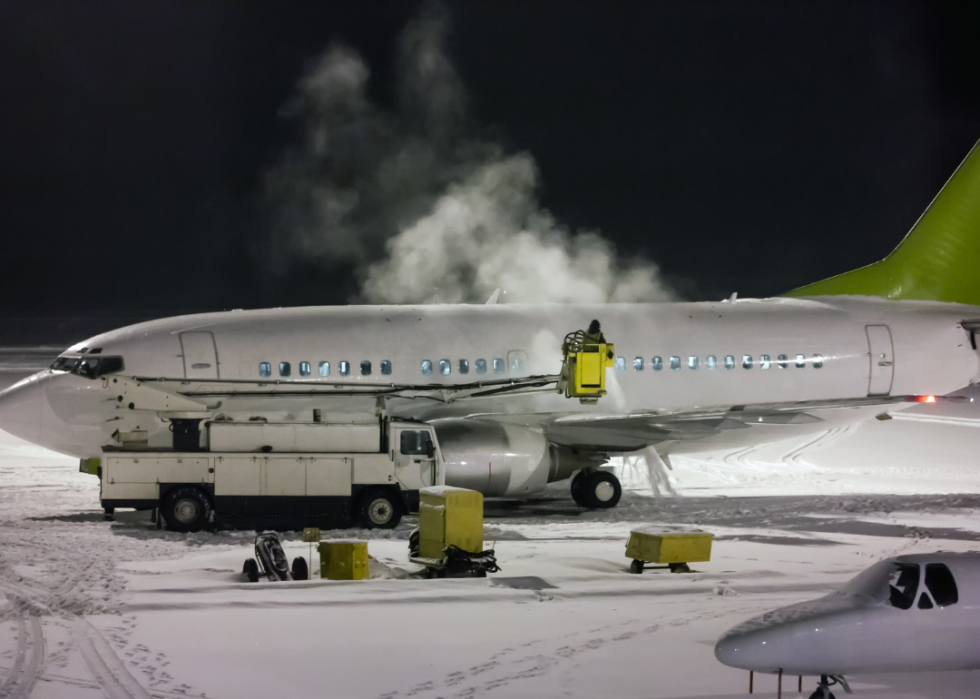
#2. Aircraft service attendants, transportation workers, and other support roles for air transportation
- Projected employment increase by 2030: 14.1%
- 2021 employment: 25,920 (19.3% decrease from 2020)
- Projected 2030 employment: 36,700
- 2021 annual mean wage: $39,315
Aircraft service attendants make sure the plane is serviced with fuel. They may also de-ice an aircraft as well as service the oxygen systems on the plane. Transportation workers have various duties including helping customers carry their luggage.
Similar to flight crews, aircraft attendants had their livelihoods affected by the pandemic. With limited flights, this reduced operating hours for service attendants and other industry employees.
As of May 2021, top states for employment as an aircraft service attendant include Texas, Florida, California, Tennessee, and Georgia.
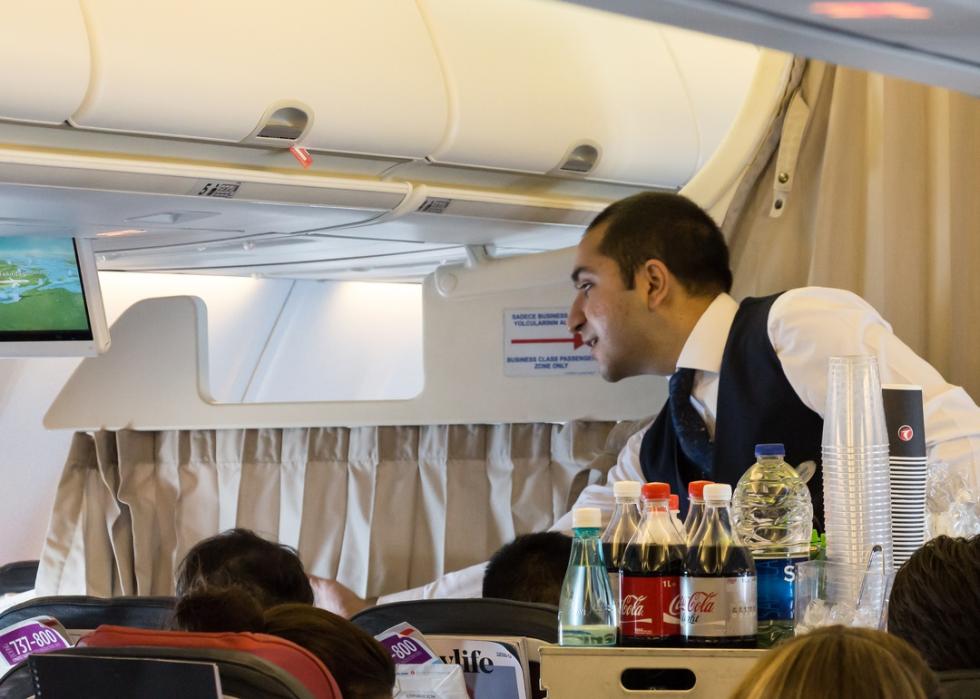
#1. Flight attendants
- Projected employment increase by 2030: 30.4%
- 2021 employment: 96,900 (5.5% decrease from 2020)
- Projected 2030 employment: 133,600
- 2021 annual mean wage: $62,280
The primary responsibilities of flight attendants are to ensure the safety and comfort of passengers during their flight. This entails performing safety checks on the plane cabin prior to takeoff and demonstrating safety procedures—such as use of oxygen masks and exit doors on the aircraft—for the passengers.
Since the emergence of the pandemic, besides running the risk of contracting the coronavirus, flight attendants have battled depression and at times have faced down unruly passengers upset over mask-wearing policies. They have also faced and had to prepare for inconveniences such as rescheduling and cancellation of flights. This meant flight attendants had to pack more clothing and other items, just in case they were away from home longer than expected.



